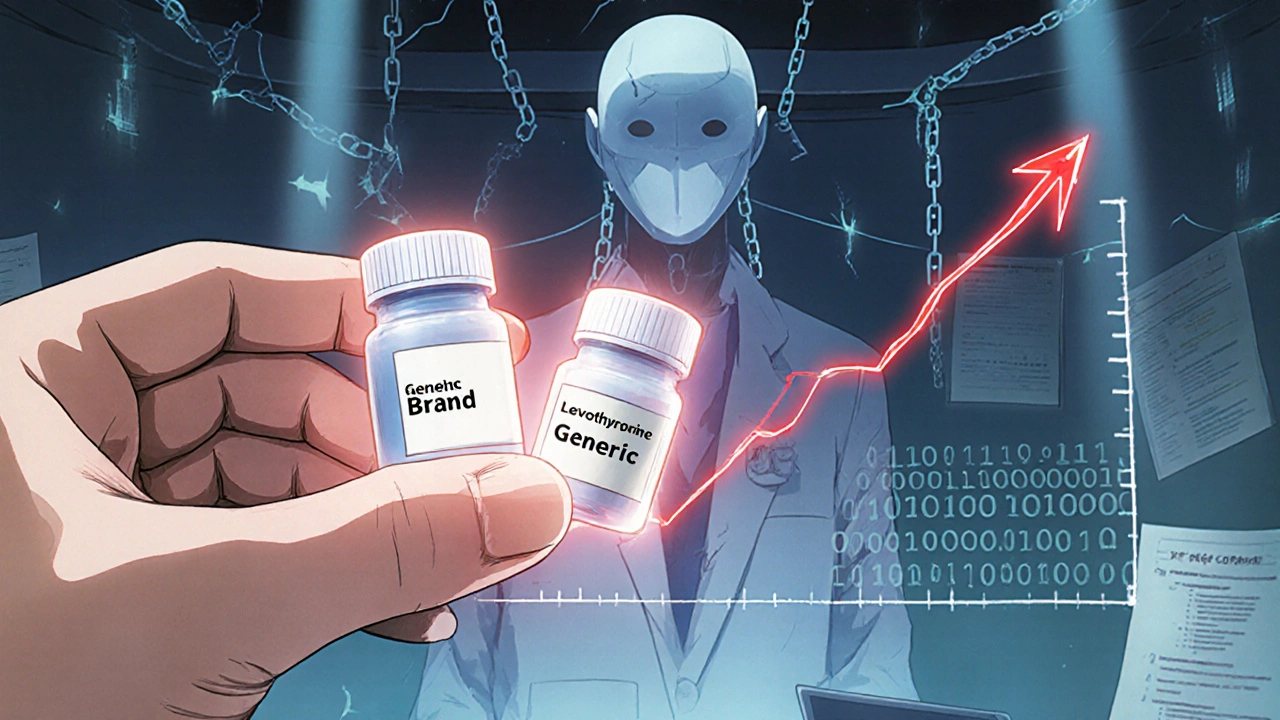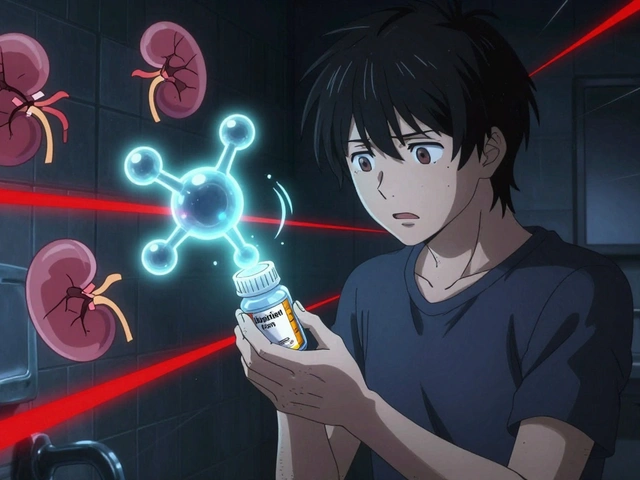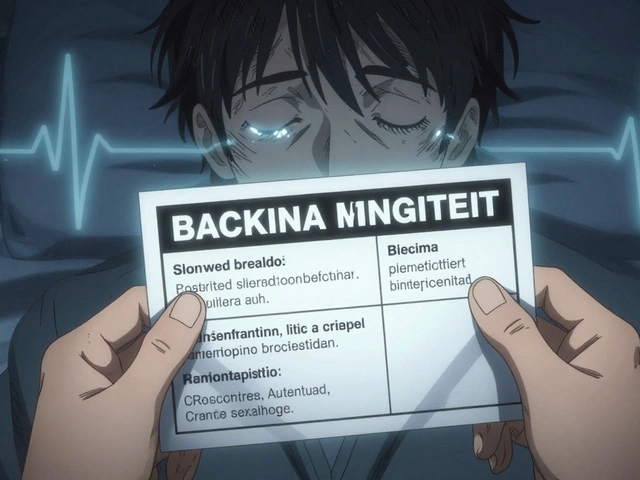When your doctor writes a prescription for a brand-name medication, and the pharmacy says it’s not covered unless you switch to the generic version-you’re not alone. This isn’t a one-off hiccup. It’s a system. Health insurers across the U.S. and Canada have spent the last 15 years building a machine designed to push patients toward cheaper generic drugs. And providers-doctors, nurses, pharmacists-are on the front lines of that machine, caught between what’s best for the patient and what the insurer demands.
Why Insurers Push for Generics
The math is simple: generic drugs cost 80 to 85% less than their brand-name equivalents. The FDA confirms this. In 2022, 90% of all prescriptions filled in the U.S. were generics. That’s not because patients prefer them-it’s because insurers made them the only affordable option. Insurers don’t just encourage generics; they enforce them. Through tiered formularies, they make brand-name drugs financially painful. A generic blood pressure pill might cost $5 at the pharmacy. The brand-name version? $95. That’s not a suggestion. It’s a penalty. Patients who can’t afford the higher cost either skip doses, split pills, or go without. And that’s exactly what insurers count on. But it’s not just about price. Insurers use prior authorization, step therapy, and formulary exclusions to lock in control. If you want the brand-name drug, you need to prove you’ve tried-and failed-on the generic first. You need to document allergies, side effects, or lab results showing the generic didn’t work. And you need to do it before the patient even gets the medicine.How Providers Are Forced to Adapt
Doctors didn’t sign up to be insurance clerks. But now, the average physician spends 13.1 hours a week just on prior authorization requests. That’s nearly two full workdays a month spent filling out forms, calling insurers, and fighting denials. In a 2023 survey by the Medical Group Management Association (MGMA), 78% of providers said prior authorization requirements had led patients to abandon treatment entirely. One doctor in Minnesota described a patient with a history of gastrointestinal bleeding who was denied coverage for a brand-name anticoagulant because the insurer required a generic first. The patient had to wait 22 days through three appeals. During that time, they ended up in the ER twice. To keep up, providers have developed workarounds. Many now attach clinical notes to every brand-name prescription-even when they know it’s unnecessary. One cardiologist on Reddit said he now adds “medical necessity” to 100% of his prescriptions, which increased his paperwork time by 40%. Practices with 10 to 50 providers now hire 1.8 full-time staff members just to handle prior authorizations. That’s over $112,000 a year per person in labor costs.Electronic Systems Help-But Don’t Fix the Problem
The good news? Electronic prior authorization (ePA) is becoming standard. Since the CMS Interoperability and PA final rule in 2024, insurers are required to use standardized digital systems that connect directly to electronic health records (EHRs). This cuts down on fax machines and phone tag. One 2024 JAMIA study found ePA reduced approval times by 55%. But here’s the catch: even with better tech, the rules still vary wildly. An insurer in California might approve a step therapy exception in 72 hours. The same request in Texas could take two weeks. And 89% of physicians say they have to learn different rules for every major insurer-UnitedHealthcare, Aetna, Cigna, Blue Cross. No two systems are alike. Some insurers, like UnitedHealthcare, have started “gold carding” programs. High-performing providers who meet certain quality metrics get exempt from prior authorization on most drugs. But less than 5% of providers qualify. For everyone else? The paperwork never stops.
When Generics Don’t Work-And Insurers Won’t Listen
The FDA says generics are bioequivalent to brand-name drugs within an 80-125% range. That’s fine for most medications. But for drugs with a narrow therapeutic index-like levothyroxine, warfarin, or certain seizure meds-tiny differences in absorption can mean big problems. The American Medical Association reports that 28% of physicians have seen adverse outcomes after switching patients to a different generic version. One patient might do fine on one brand of generic levothyroxine. Switch them to another, and their TSH levels spike. Their fatigue returns. Their heart races. But the insurer doesn’t care. The generic is “equivalent.” So they deny the request to switch back. In 2025, Arizona passed HB 2175, which bans insurers from using AI alone to deny medical necessity claims. That’s a rare win for providers. But most states still let algorithms decide whether a patient gets the right medicine. A computer doesn’t know if a patient’s skin broke out after switching generics. It doesn’t know if their depression worsened. It only knows the numbers.State Laws Are Changing the Game
Not all states are letting insurers run unchecked. California’s AB 347, effective January 2024, forces insurers to approve step therapy exceptions within 72 hours for urgent cases. And they must use a standardized form. Since then, approval rates have jumped to 92% on first submission. Florida cut the time insurers have to request overpayments from providers from 30 months to 12. That’s a big deal-it stops insurers from holding payments hostage for years. And it’s not just state laws. The federal Improving Seniors’ Timely Access to Care Act, passed in 2022, requires Medicare Advantage plans to respond to urgent prior authorization requests within 72 hours. That’s a step forward. But it doesn’t cover commercial insurance.
What Providers Are Doing Right
The best providers aren’t just fighting the system-they’re learning how to beat it. They use templates. A 2023 AAFP survey found 68% of physicians now use pre-written letters for common exceptions. One template for levothyroxine might say: “Patient experienced palpitations and elevated TSH levels after switch to generic. Lab values show non-equivalent absorption. Medical necessity confirmed.” They build relationships. Some doctors call the same case manager every time. They know who responds fast. Who’s willing to override denials. Who actually reads the notes. They document everything. Successful appeals don’t rely on “I think this is better.” They use lab values, medication logs, hospital records. Objective data. Numbers. Charts. Insurers can’t deny those. And they’re pushing back. The AMA, the American College of Physicians, and other medical groups are lobbying for federal limits on prior authorization. They’re calling it “administrative violence.”The Bigger Picture: Cost vs. Care
Insurers argue they’re saving money without hurting patients. Sun Life in Canada claims 98.7% of generic switches go smoothly. And yes, billions are saved. The U.S. spends $621 billion on prescriptions annually. Generics make up only 18% of that spending. But when a patient skips their medication because they can’t afford it, or ends up in the ER because the generic didn’t work, the cost isn’t just financial. It’s human. Dr. Mark Duggan from Stanford puts it plainly: “Excessive generic substitution mandates can undermine therapeutic relationships and lead to non-adherence.” And that’s the real tension. Insurers want to control costs. Providers want to control outcomes. Patients just want to get better. Right now, the system is tilted hard toward cost. And providers are the ones left holding the bag-writing letters, making calls, watching patients suffer because the rules don’t care about individual needs.What’s Next?
By 2030, UnitedHealthcare aims for 95% generic utilization. That’s not a goal-it’s a target. And they’re not slowing down. But the backlash is growing. In 2024 and 2025, 34 states introduced bills to limit prior authorization. The FDA is reviewing how generics are tested for narrow therapeutic index drugs. Draft guidance is expected in late 2025. The future might see more value-based formularies-where certain brand-name drugs are preferred because they lead to fewer hospitalizations, better adherence, or fewer side effects. That’s a smarter way forward. Until then, providers will keep doing what they’ve always done: trying to do right by their patients, even when the system makes it harder.Why do insurers force patients to use generic drugs?
Insurers mandate generic drug use because generics cost 80-85% less than brand-name drugs, saving billions annually. They use tiered formularies, prior authorization, and step therapy to make brand-name drugs financially unattractive or inaccessible unless specific medical criteria are met.
What is prior authorization, and why is it a problem for providers?
Prior authorization is a process where providers must get insurer approval before prescribing certain medications. It’s a major burden because physicians spend an average of 13.1 hours per week on these requests, often dealing with inconsistent rules across insurers, delayed approvals, and denials that delay or block patient care.
Can generic drugs really be substituted for brand-name drugs without risk?
For most medications, yes. But for drugs with a narrow therapeutic index-like levothyroxine, warfarin, or epilepsy medications-even small differences in absorption can cause serious side effects or treatment failure. The FDA allows a bioequivalence range of 80-125%, but critics argue that’s too wide for these sensitive drugs.
How are providers adapting to insurer requirements?
Providers are using templated letters for common exceptions, building relationships with insurer case managers, integrating electronic prior authorization into their EHR systems, and hiring dedicated staff to handle paperwork. Some now automatically include clinical justification on all brand-name prescriptions to avoid delays.
Are there any laws helping providers fight insurer restrictions?
Yes. California’s AB 347 requires insurers to approve step therapy exceptions within 72 hours. Arizona’s HB 2175 bans insurers from using AI alone to deny medical necessity claims. Federally, the Improving Seniors’ Timely Access to Care Act requires Medicare Advantage plans to respond to urgent requests within 72 hours.
What’s the long-term outlook for generic substitution policies?
Insurers plan to push generic use even higher-targeting 95% by 2030. But growing provider and patient pushback, along with new state laws and FDA reviews of narrow therapeutic index drugs, may lead to more nuanced policies. The future may favor value-based formularies that prioritize outcomes over cost alone.






9 Comments
hannah mitchell
November 25, 2025Been there. My mom switched generics for her thyroid med and ended up in the ER with atrial fibrillation. Insurer said it was 'bioequivalent.' Yeah, right. Bioequivalent doesn't mean 'safe for every human.'
Providers are just glorified insurance clerks now.
Bea Rose
November 26, 2025Generic substitution isn't the problem. The problem is insurers using algorithms to override clinical judgment. No one's disputing cost savings. But when a computer denies a life-sustaining drug because a lab value is 'within range,' that's not efficiency. That's cruelty.
Jesús Vásquez pino
November 27, 2025Let me tell you about my last prior auth. I had to fax a 3-page letter, call three times, get a denial, appeal, get another denial, then call the same rep who said 'I don't care what the chart says, policy says no.' And this was for a patient who literally can't swallow pills without gagging. The system is broken. And it's not even trying to hide it.
Vanessa Carpenter
November 28, 2025I work in a rural clinic. We don't have a dedicated prior auth person. The nurse practitioner does it between seeing patients. She's burned out. The patients are frustrated. And the insurers? They just send automated emails saying 'request received.' No one's accountable. No one's listening.
It's not about money. It's about dignity.
vikas kumar
November 29, 2025As someone from India where generics are the norm and often the only option, I see this differently. Here, people don't have a choice - but they also don't have the bureaucracy. No prior auth. No forms. Just the drug and the doctor's word.
Maybe the problem isn't generics. It's the American obsession with control. We turned healthcare into a compliance game. Doctors aren't healers anymore - they're auditors.
And patients? They're just data points with insurance IDs.
Amanda Meyer
November 30, 2025The notion that generics are interchangeable across all patients is a dangerous oversimplification. The FDA’s 80-125% bioequivalence range is statistically acceptable for population-level outcomes - but irrelevant for individuals with narrow therapeutic indices. Levothyroxine isn’t aspirin. Warfarin isn’t ibuprofen. And yet insurers treat them as such.
When a physician prescribes a brand-name drug based on documented clinical history, it’s not preference - it’s standard of care. The fact that insurers force providers to prove medical necessity for a drug that has already proven effective is a violation of clinical autonomy. It’s not cost containment - it’s institutionalized medical malpractice by proxy.
The AMA calling it 'administrative violence' isn’t hyperbole. It’s accurate. We’re not just wasting time. We’re delaying care. We’re increasing hospitalizations. We’re eroding trust in the entire system. And no algorithm, no ePA platform, no 'gold carding' fixes that. Only systemic reform - and accountability - will.
Michael Collier
December 1, 2025While the frustrations expressed here are valid and well-documented, it is imperative to acknowledge that the current structure of pharmaceutical reimbursement is a direct consequence of broader healthcare cost inflation. The utilization of generic medications is not inherently malicious; rather, it is a necessary mechanism for sustaining access to care for millions of low-income and elderly patients who would otherwise forgo treatment entirely.
That said, the implementation of rigid, non-clinical prior authorization protocols - particularly those devoid of clinical nuance - is indefensible. A balanced approach must be pursued: standardized, automated, and expedited prior authorization pathways for high-risk medications, coupled with mandatory clinician input for narrow therapeutic index drugs. Federal regulation must mandate interoperability, reduce insurer discretion, and prohibit algorithmic denials without human review. This is not a partisan issue - it is a moral imperative.
Shannon Amos
December 2, 2025So let me get this straight - we spent $20 billion on EHRs, then built a system where doctors have to write novels just to get a patient their damn medicine?
Brilliant. Absolutely brilliant. The future is here, and it’s a fax machine with a login page.
stephen riyo
December 2, 2025My cousin’s kid had a seizure after switching generics. The insurer denied the switch back for 11 weeks. The doctor had to go to the pharmacy and pay out of pocket to get the original brand. The kid’s fine now. But the paperwork? Still pending. I mean, what even is this? We’re not running a bank. We’re trying to keep people alive.
And now they want to use AI to decide who gets meds? Are you kidding me?
Someone’s making money off this. And it’s not the doctors. Or the patients.